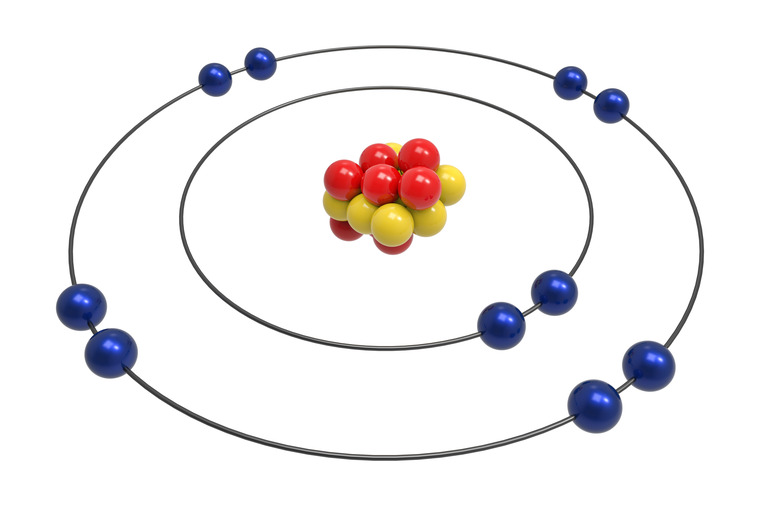What Affects The Atomic Radius?
The radius of an atom is the distance from the center of its nucleus to its outermost electrons. The size of the atoms of the various elements — hydrogen, aluminum and gold, for example — changes depending on the size of the nucleus and how much energy the electrons have. Looking at a periodic table that lists atomic radius, you can see how an element's location in the table affects the atom's size.
TL;DR (Too Long; Didn't Read)
The number of electrons in an atom affects its radius, as does the energy of the electrons.
Atomic Structure
Atomic Structure
An atom is made up of a central nucleus of protons and neutrons surrounded by a cloud of electrons. The atom's size depends on a balancing act involving a few different forces. The proton has a positive electric charge, while the electron's is negative. The two types of particles attract each other — the stronger the attraction, the smaller the atom's radius tends to be. However, an atom with many electrons doesn't crowd them into the same space. They occupy several concentric "shells," so the more electrons, the more shells, and the bigger the atom. An effect called "screening" complicates the force exerted by a large nucleus. The outermost protons block the inner ones, reducing the overall attraction on the electrons.
Atomic Number
Atomic Number
As the atomic number of an element increases, so does the size of its nucleus and the number of electrons around it. The bigger the atomic number, the larger the atom's radius. This is especially true as you move straight down a given column on the periodic table; the radius of each successive neighboring atom increases. The growing size is due to the increasing number of filled electron shells as you move down the periodic table.
Periodic Table Row
Periodic Table Row
In the periodic table, the atomic radius of elements tends to decrease as you move across a row from left to right. The number of protons increases left to right, leading to a greater attractive force in the nucleus. The stronger attraction pulls the electrons closer in, reducing the radius.
Electron Energy
Electron Energy
Electric currents and light both carry energy. If the amount of energy is sufficiently large, an atom's electrons can absorb it. This causes the electrons to temporarily jump to a shell farther away from the nucleus, increasing the atom's radius. Unless the electron flies completely away from the atom, it releases the energy it just received and drops back to its original shell. When this happens, the atom's radius shrinks to normal.
Cite This Article
MLA
Papiewski, John. "What Affects The Atomic Radius?" sciencing.com, https://www.sciencing.com/affects-atomic-radius-23091/. 23 April 2018.
APA
Papiewski, John. (2018, April 23). What Affects The Atomic Radius?. sciencing.com. Retrieved from https://www.sciencing.com/affects-atomic-radius-23091/
Chicago
Papiewski, John. What Affects The Atomic Radius? last modified March 24, 2022. https://www.sciencing.com/affects-atomic-radius-23091/
